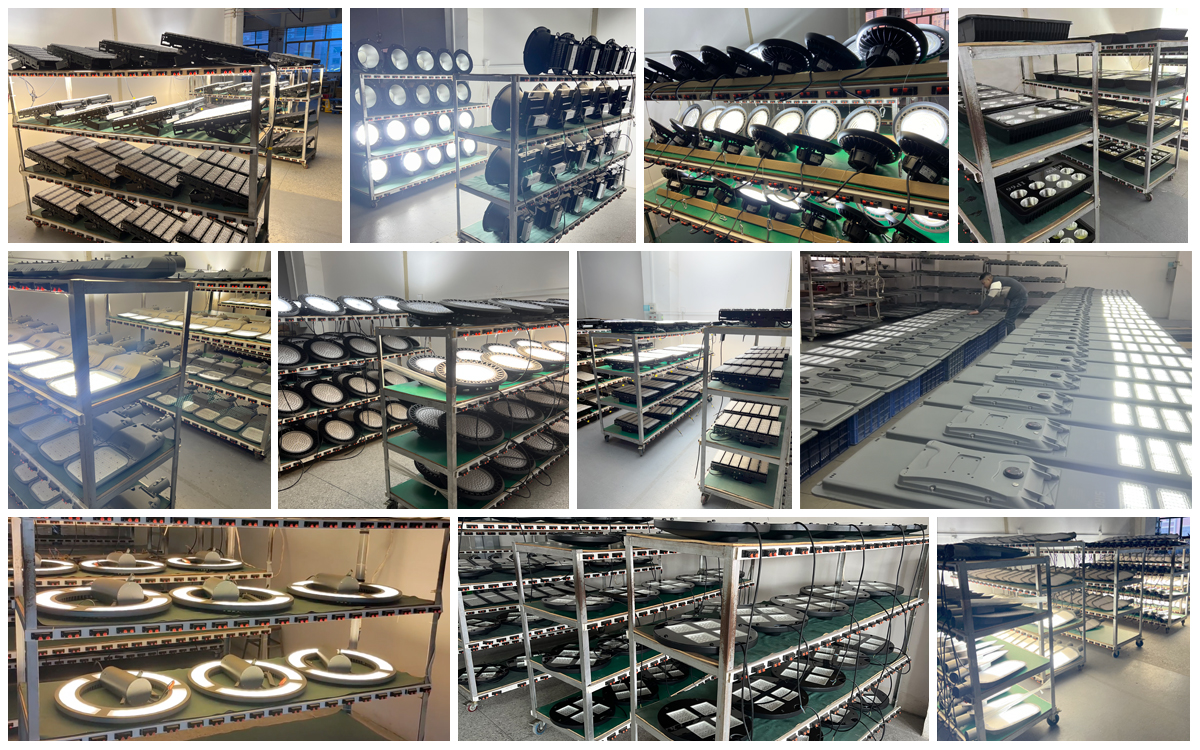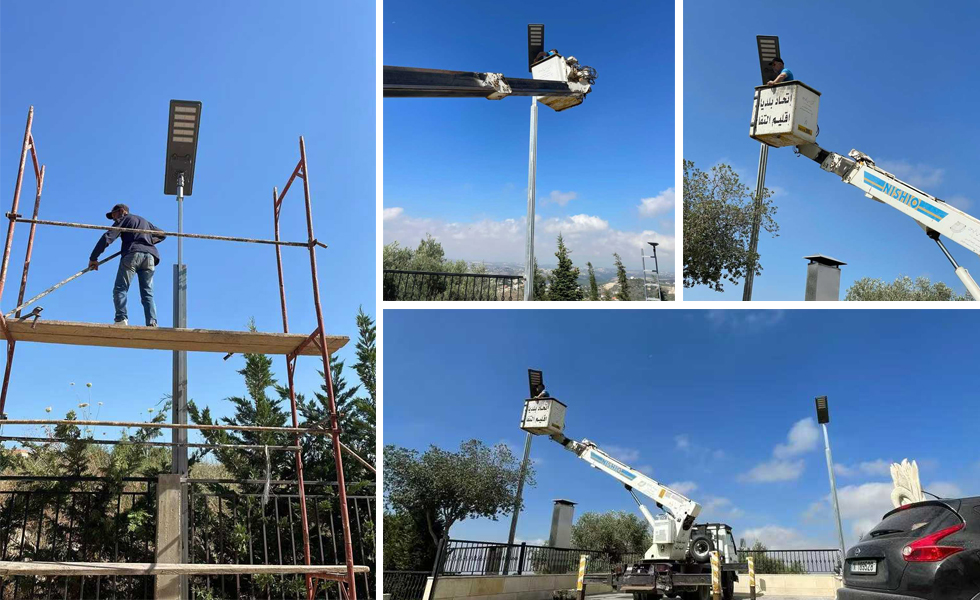
Aging Testing for LED Outdoor Luminaires: A Critical Step in Ensuring Stability and Quality
In the LED outdoor lighting industry, products must not only offer high luminous efficacy and energy savings, but also withstand the rigors of complex outdoor environments, including high and low temperatures, humidity, rain, dust, and long-term, high-load operation. Among the many quality control steps, comprehensive inspection and aging testing are key steps in ensuring stable performance and lifespan of LED luminaires. Especially in export and large-scale projects, aging testing has become a crucial indicator of a manufacturer’s professionalism and reliability.
1. Why is aging testing necessary for LED outdoor luminaires?
LED outdoor luminaires (such as streetlights, floodlights, high-mast lamps, and garden lights) are commonly used in locations such as roads, plazas, stadiums, factories, and ports, and have extremely high safety and reliability requirements. If luminaires do not undergo rigorous aging testing, the following problems may occur in actual use:
High premature failure rate: Some components may contain hidden defects early in production. Released to market without aging testing, they are prone to failure after just a few days or weeks of use.
Abnormal Luminous Decay: Luminaires that haven’t been fully tested for driving and heat dissipation may experience a drop in brightness or color temperature drift over a short period of time.
Unstable Power Supply: Issues with the driver’s voltage withstand, load, and temperature rise must be identified during the burn-in phase, otherwise they will affect the lifespan of the entire lamp.
Safety Hazards: Defects in wiring connections or heat dissipation design can easily lead to safety issues such as overheating and short circuits after high temperatures or prolonged operation.
Therefore, burn-in testing not only verifies product quality but is also a crucial means of reducing after-sales costs and safeguarding customer reputation.
II. The Difference Between Full Inspection and Spot Checking
In the LED lamp production process, there are two main inspection methods:
Spot checking: Testing only a subset of samples. This is suitable for products with large batch sizes and high risk tolerance, but it cannot guarantee that all lamps are fault-free.
Full Inspection: Testing and burning-in each lamp individually can maximize the detection of early faults and ensure a near-100% qualified product yield.
For outdoor engineering lighting, full inspection plus burn-in testing is the most rigorous approach in the industry and the one that best protects customer interests. Many large-scale projects, such as municipal road lighting, stadium lighting, and government bidding projects, explicitly require suppliers to provide proof of full inspection and burn-in testing.
III. LED Luminaire Burn-in Testing Process
Burn-in testing is generally conducted after assembly is complete and the initial power-on test has passed. The main process is as follows:
Power on and Light Up
All luminaires are connected to a burn-in test rack or burn-in vehicle and powered on and lit.
The power supply voltage is set between the upper and lower limits of the rated voltage range (e.g., AC 90–305V) to simulate actual power fluctuations.
Long-Term Operation
The burn-in period is typically 4–8 hours, though some high-end manufacturers extend it to 12–24 hours.
During this process, the luminaires operate continuously to verify the stability of the cooling system, driver, and LED chip under long-term operation.
High and Low Voltage Shock Testing
During the burn-in process, some manufacturers will perform voltage shocks to test whether the luminaires can withstand power grid fluctuations.
Some luminaires also undergo thermal cycling testing to simulate the effects of daytime and nighttime temperature fluctuations on the product.
Appearance and Performance Testing
After burn-in is complete, inspect the lamp housing for deformation or discoloration; the lens for cracks; and the lamp beads for flickering, dead light, or noticeable light decay.
Compare luminous flux and power parameters to ensure actual output meets design standards.
Screening and Grading
Products eliminated during the burn-in process are returned for repair or scrapping to ensure a high pass rate before delivery.
Qualified lamps are affixed with quality inspection labels and packaged.
IV. Core Technical Key Points of Burn-in Testing
Constant Temperature and Ventilation: The testing room must maintain an appropriate temperature and air circulation to avoid local overheating and false failures.
Voltage Control: Burn-in equipment must support a wide input voltage to verify the voltage resistance of the driver.
Aging Equipment: Large-scale factories often have dedicated burn-in lines capable of testing hundreds of lamps simultaneously, improving efficiency.
Automatic Monitoring: Some factories use intelligent monitoring systems to automatically record the current, voltage, power, and temperature curves of each lamp, ensuring traceability of test data.
V. The Value of Burn-in Testing for Customers
For customers, burn-in testing is not only a quality assurance measure within the factory but also a key to directly reducing procurement risks:
Reducing post-sales risks: Luminaires that have undergone burn-in screening have extremely low early failure rates, reducing returns, exchanges, and after-sales costs.
Improving project reliability: In applications such as roads, squares, and factories, stable lighting means greater safety and sustainability.
Enhancing brand credibility: Manufacturers that provide burn-in test data and videos are more likely to gain customer trust and establish long-term partnerships.
Supporting project bidding: Many government and project bidding documents explicitly require “full inspection and burn-in test reports before shipment,” making them mandatory qualifications for suppliers.
VI. Conclusion
Burn-in testing is an essential step in the production process of LED outdoor lighting. It not only screens out potential defects and ensures the stability and lifespan of each luminaire, but also significantly reduces customer risks and costs. For manufacturers, adhering to “full inspection and burn-in testing” is not only a commitment to quality, but also the best way to ensure customer trust.
In the fiercely competitive global LED lighting market, only by controlling every detail can we establish an image of “professional, reliable and trustworthy” in the minds of customers.


